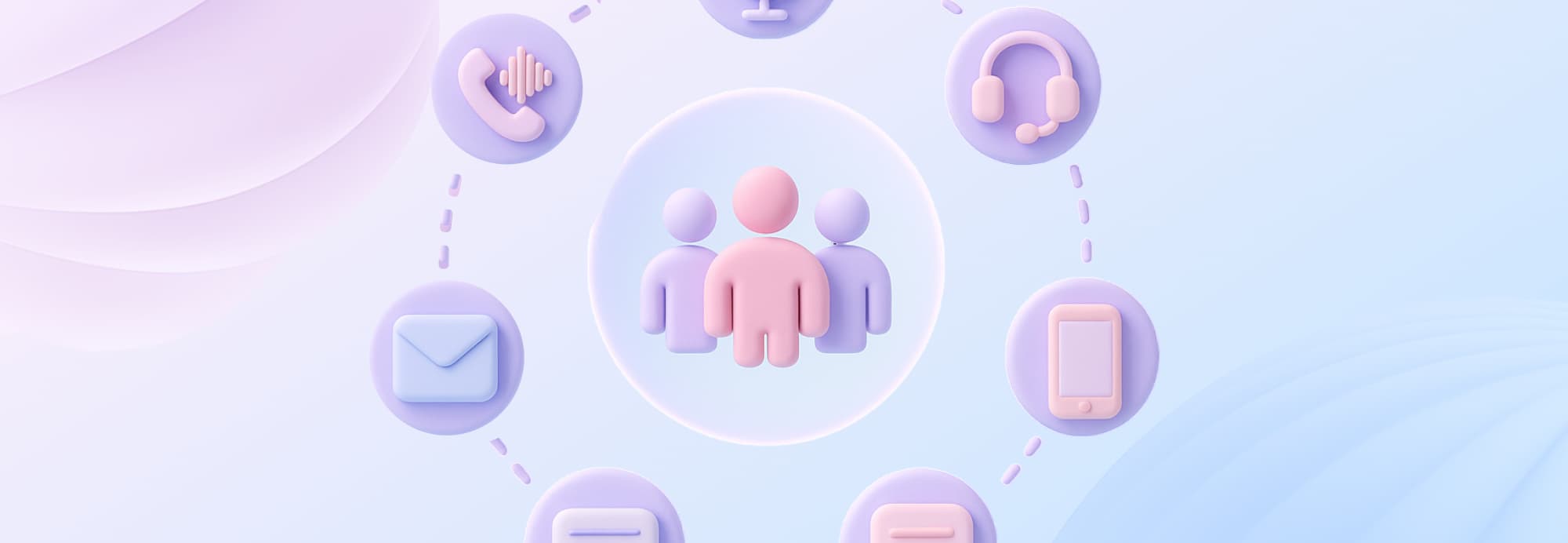.webp?2025-12-17T15:00:29.367Z)
Spotify Wrapped ideas make stats lovable

How to Improve Omnichannel Customer Experience
Karina
Author @ InAppStory
TL;DR
Omnichannel customer experience is about creating seamless interactions across all touchpoints, whether mobile, email, or in-store. It’s not enough to be available on multiple channels. Make journeys continuous across channels. Unify IDs and events. Ship six high-impact flows in 30 days. Capture zero-party data inside the experience. Orchestrate at the right time. Measure weekly with holdouts. (Obvious? Sure. Implemented? Rarely.)
What is Omnichannel Customer Experience?
Omnichannel customer experience ensures that customers have a consistent and unified journey across all channels whether they are interacting with the brand via a mobile app, website, email, or physical store. The key to omnichannel success lies not just in having multiple channels but in ensuring that the experience feels cohesive and integrated. Each touchpoint should inform the next, keeping the customer journey fluid and efficient.
“When we analyzed 5,000+ instances of in-app visual communication for the 2025 E-Commerce Mobile Engagement Report one pattern kept showing up: the brands that win don’t over-engineer. They ship simple, consistent micro-journeys—cart reminders that pick up where web left off, onboarding that adapts after the first tap, and promos that respect context. Tools help. Discipline wins” — Vlad Lastovsky, CEO & Founder, InAppStory.
If you want a refresher on channel choreography, read Omnichannel Messaging: The Smart Way to Sell. For architecture debates, see Unified Commerce vs. Omnichannel: Stop Getting It Wrong.
How to Improve Omnichannel Experience
1) Where are you dropping context today?
Start with a two-week baseline. Ask: At which handoffs do we lose state? Web→app, app→email, social→site are frequent culprits.
Do this:
- Map 10 top journeys from first touch to repeat purchase.
- List the events and IDs each system uses. Circle mismatches.
- Capture friction with 5 customer calls and 20 session replays.
- Mark anything that should “follow” the user: cart state, last viewed items, coupon eligibility, service case status.
Modern shoppers don’t stay in one lane, 73% use multiple channels in their journey, which makes continuity non-negotiable, doesn’t it?
2) Unify identifiers and events before you personalize
You do not need a full CDP on day one, yet you do need a stable identity and event schema.
Set a one-page spec.
- Primary ID: email or phone for outbound, plus a device/app ID for in-app.
- Event taxonomy: viewed_product, add_to_cart, checkout_started, coupon_applied, support_case_opened.
- Merge offline orders nightly; pass loyalty tier on each session.
Industry perspective backs this: Martin Kihn (Salesforce) has long emphasized people-based data, a true omnichannel view, and a “first-party data revolution.” Right speed matters less than right-time context.
3) Fix the three continuity must-haves
These are boring, but they move revenue quickly. Ready?
- Cart & wish-list sync across channels. If I add on web, I should see it in app and email within minutes.
- Conversation carryover. If I open an in-app message, the next email should reflect that state (not repeat it).
- Promotion eligibility clarity. The same rules across app, web, store, and support.
With InAppStory, you can push real in-app continuity fast: show targeted stories, in-app messages (bottom sheets, full-screens, modals), and even mini-games that use a shared event context. Buttons pass actions back to the app; timers, polls, quizzes, product feeds, and A/B tests are built-in. No app release needed for each content change.
4) Ship six “atomic journeys” in 30 days
Keep each flow tiny: trigger, context, channel mix, stop rule, one success metric, one guardrail.
- First-session onboarding. Trigger: first app open. Show a 3-card story: value → opt-ins → a small “win.” Success: time-to-first-value. Guardrail: opt-out rate.
- Browse-abandon rescue. Trigger: product views, no add-to-cart. In-app nudge next session; if no open in 24h, send email referencing the exact items.
- Cart recovery with channel memory. If cart started on web, open app with cart prefilled; if cart started in app, email references item names (not generic “you left something”).
- Back-in-stock / price-drop. Opt-in via in-app poll; deliver via push + in-app banner; fall back to email if unopened.
- Post-purchase care. Confirm, teach, and route ratings: 4–5★ to public reviews; 1–3★ to feedback capture.
- Win-back with zero-party data. Short quiz in stories to learn intent, then a tailored cadence rather than one blunt discount.
5) Collect zero-party data inside the journey (not after)
Short polls, quizzes, “ask a question,” and feedback sliders embedded in Stories or in-app messages beat long forms. The data is voluntarily given, higher quality, and immediately useful for targeting.
Kihn’s view lines up: fold customer-provided signals into a right-time profile and keep one conversation across teams. You’ll feel the lift.
6) Right-time beats real-time
Real-time is impressive, whereas right-time is useful. For example, send a promo when the item is back in stock and the user is active, not at 3 a.m. Martin Kihn’s guidance is to align marketing and service data so the customer feels one conversation, regardless of team or tool.
7) Measure like a product team
Adopt a weekly ritual:
- Holdouts in each journey to prove incrementality.
- One North-Star and one guardrail per flow (e.g., revenue per recipient and complaint rate).
- One meaningful change per week on your top three flows.
8) Governance that saves you from yourself
Small teams win with standards.
- Consent-first design. Explain value for data sharing; respect channel preferences.
- QA checklists at every handoff (web→app, app→email, etc.).
- Reusable templates for stories, mini-games, and in-app messages, so creative teams can ship without dev time.
Key facts & sources
- 73% of consumers use multiple channels in their shopping journey. Insider
- Omnichannel exposure can drive more repeat purchases and ~9.4% average yearly revenue lift when executed well. Insider
- Expert view: a first-party data revolution enables a true omnichannel view and right-time orchestration (Martin Kihn, Salesforce). CMSWire.com
- For context and internal alignment, reference our two posts on omnichannel messaging and unified commerce.

